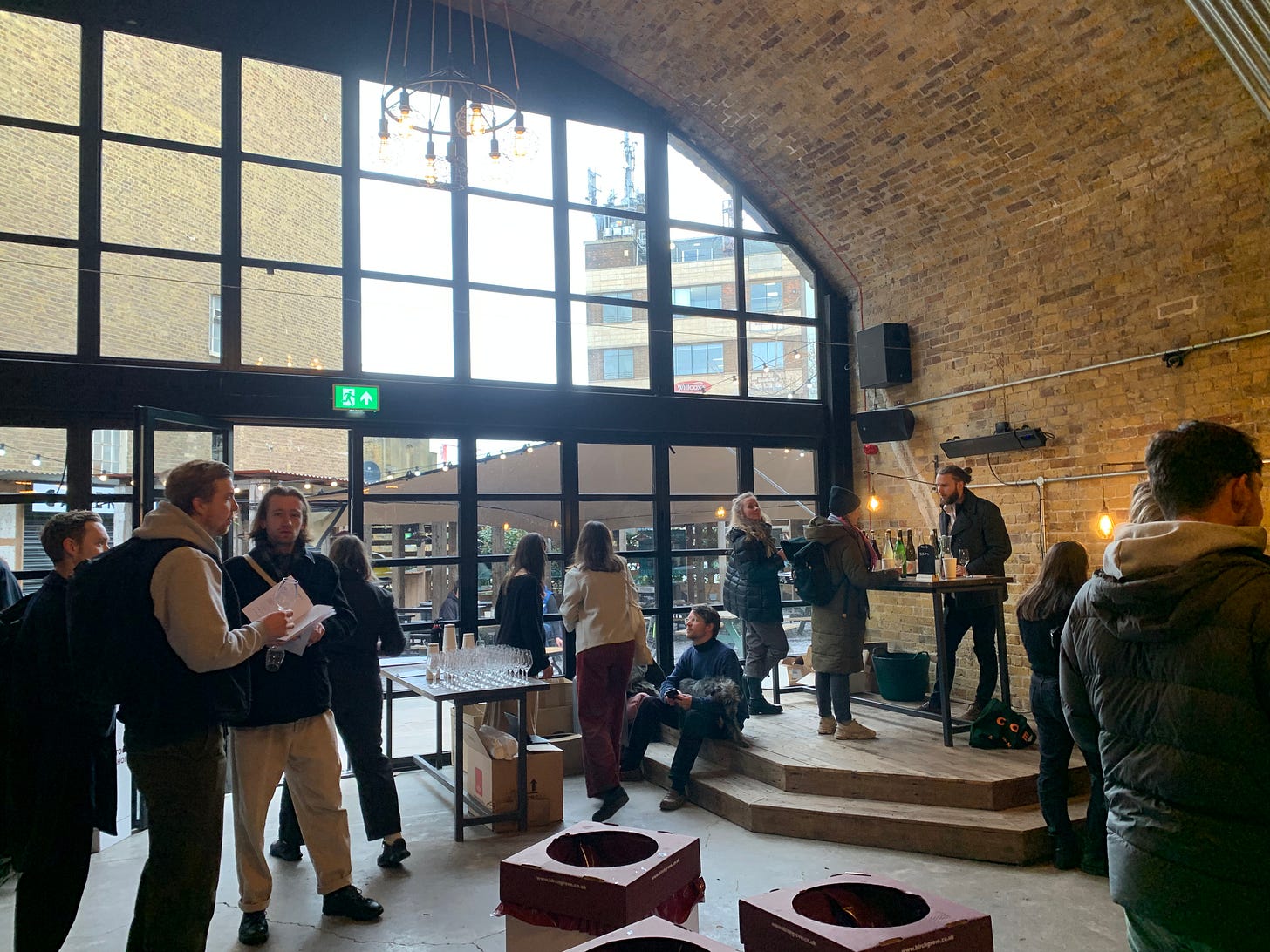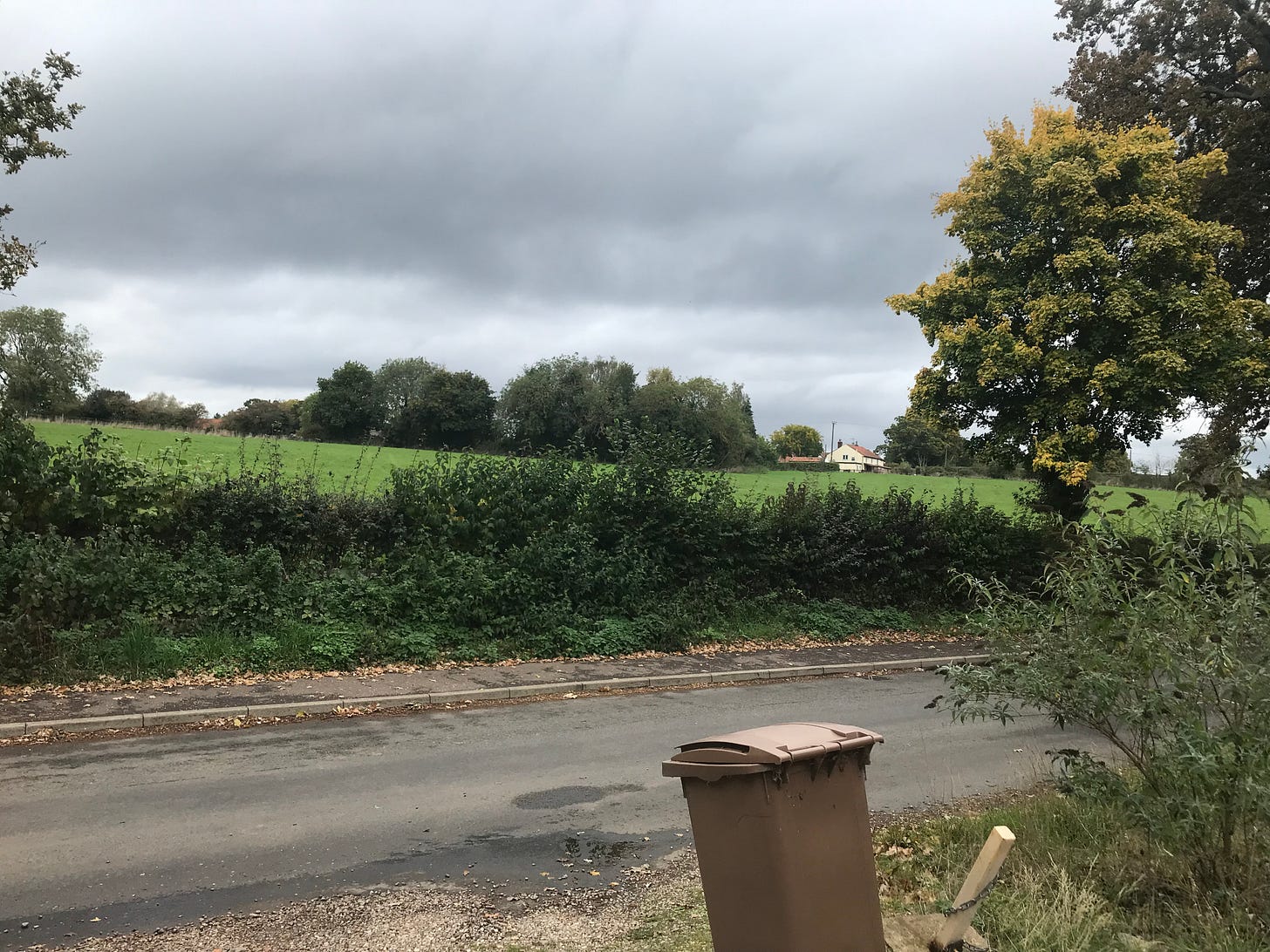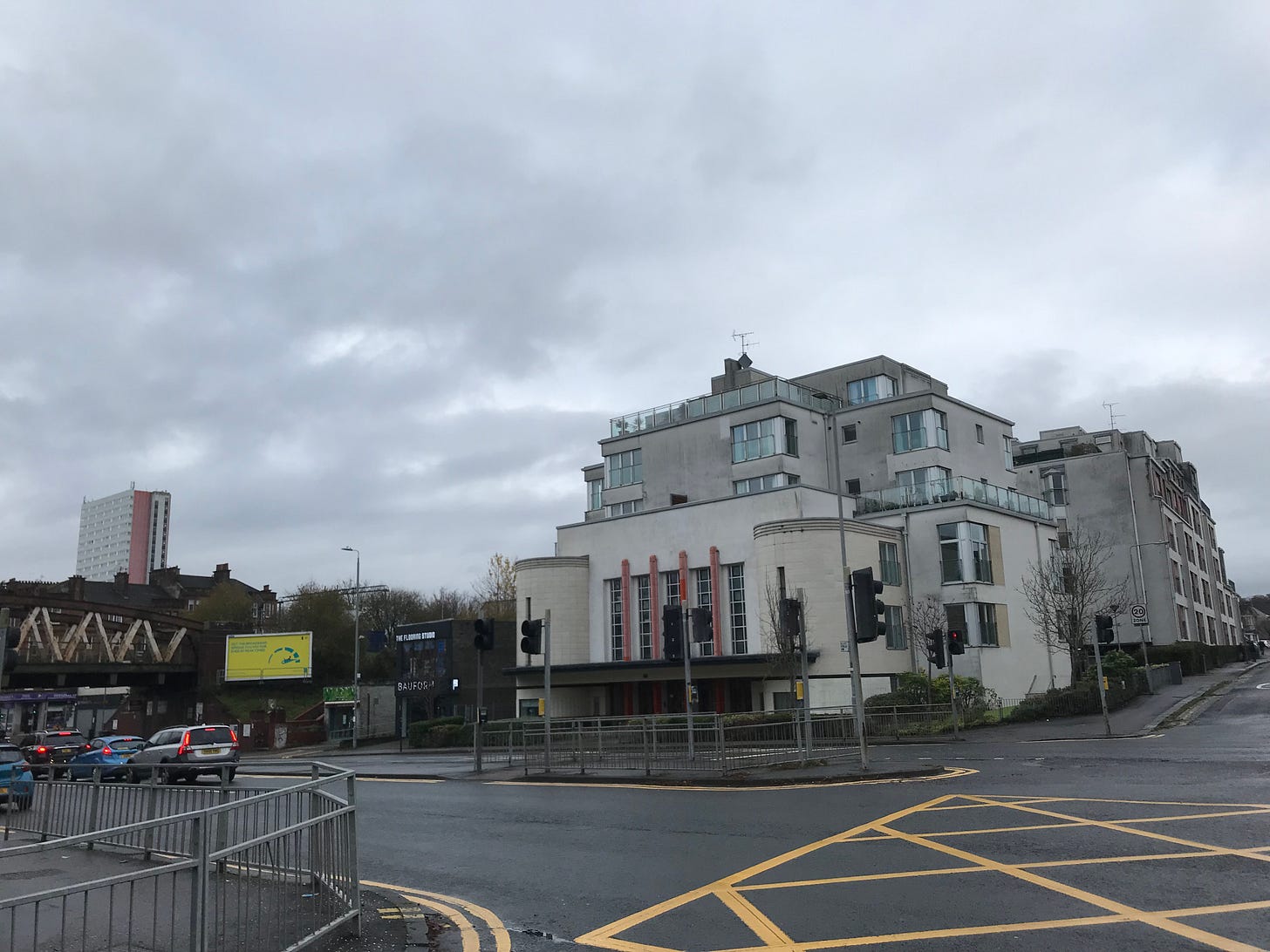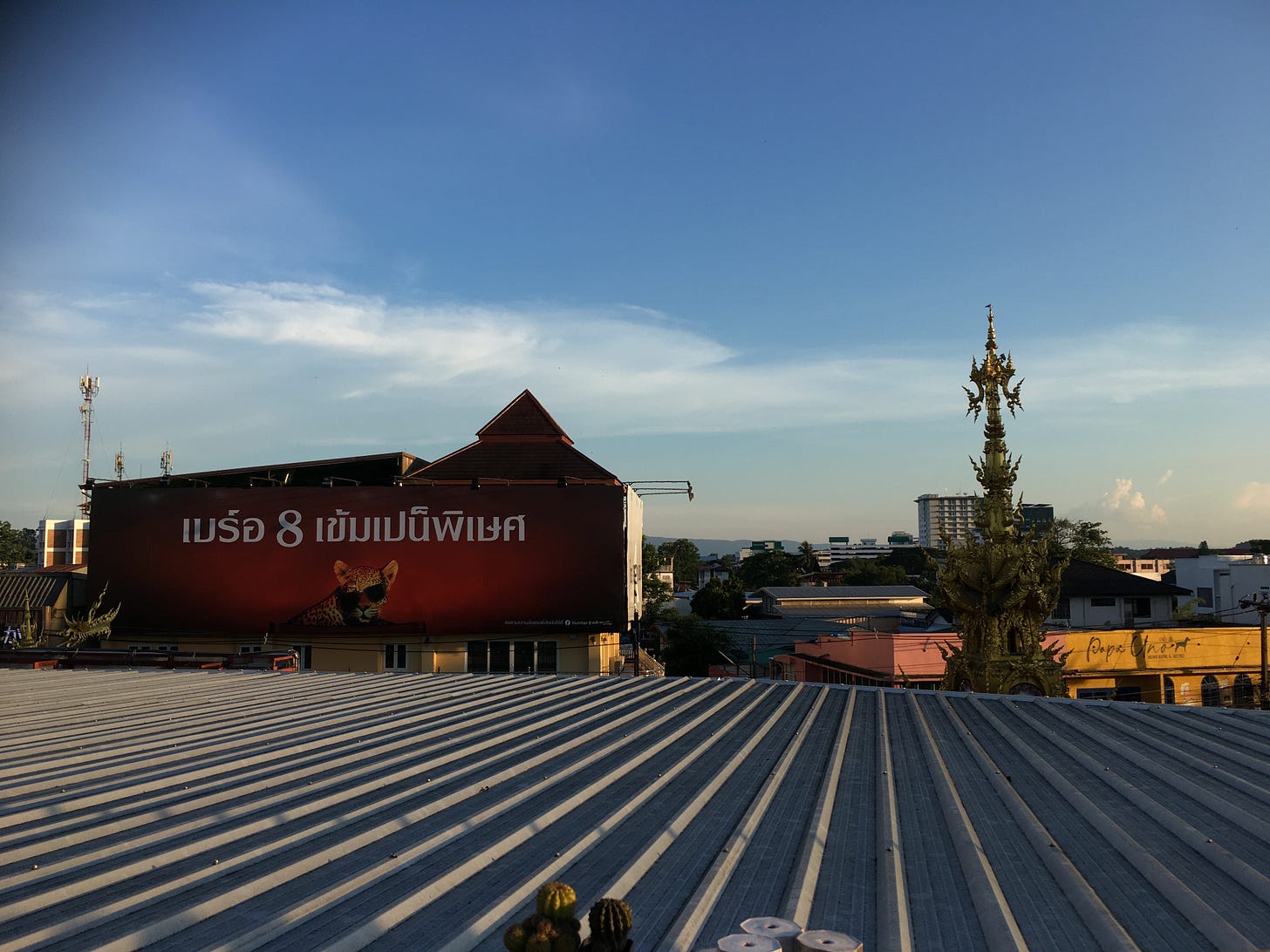‘Buy local’, ‘shop local’, ‘stay local’, ‘I’d rather go with someone local’. The preference for ‘local’ is everywhere and it is not controversial. Having a preference for ‘local’ things can easily go hand in hand with progressive politics as it can with conservative politics. It’s politically quite neutral—not totally neutral, and not inherently neutral, sure. But saying you like to ‘buy local’ doesn’t nail your colours to the flag nearly as much as saying your opinions about abortion, firearms, or immigration.
What does ‘local’ really mean? Perhaps its poorly defined boundaries helps it retain a perceived neutrality. ‘Local’ stems from localis, a genitive word meaning ‘of a place’, ultimately coming from ‘locus’, just meaning ‘place’. When we are using ‘local’ we are signalling ‘place-yness’. The quality that somewhere relates to a specific place, rather than something else.
What else?
All places are specific. There are no vague places, no un-places, strictly speaking. If I drop a pin anywhere in Google maps, whether that be the Sahara Desert or Basingstoke, these are both places. The lack, common to both Basingstoke and the Sahara of biodynamic pear farming and community knitting projects or whatever warm and fuzzy ‘local’ activity you choose, does not make these locations any less of a place.
Yet we all think, deep down, that there are un-places, and when we consider what the criteria for an un-place might be, things start to get rather interesting.

In the planning world, we like to talk about ‘place making.’ The implication here is that it is possible to create an ‘un-place’ with a certain set of planning moves—moves that might be difficult to define but which are definitely bad. The ‘un-place’ is whatever demon of contemporary construction you wish to produce in your head: the ‘un-place’ is disaffected, inchoate, unsafe, boring, menacing. The place, on the other hand, is somewhere real, coherent, safe, lively, attractive, homely. Logically speaking, both are places though. No matter how many motorway fly-overs, astroturfed cul-de-sacs and shiv-wielder hubs, anywhere with easting and northing, degrees latitude and longitude, is a place.

What we do when we think of places being made or un-made in this sense is convert a rhetorical notion back into something concrete. The idea that somewhere is not a ‘real place’ is simply a strong way of saying we don’t like it. We want to disown the placehood of bad locations because we cannot imagine living there, and we cannot bear to exist there. Rhetoric, therefore, is being reified—turned into a res, a thing.
I, like any normal human, do get emotionally affected by threatening places. Places which sit in the margins of popular places and places which have an unclear purpose: these places make me want to leave. But for a brief moment they can be enlightening, if we try to ask why they fail to strike us as ‘real places’. Think about what strikes you as disquieting: what happens to the pedestrian’s movements as they try to traverse the terrain, what happens to their gaze when they struggle to find something of beauty to enjoy. Then think about what the designer(s) of the place were trying to achieve, what political or aesthetic project they were working on—or whether the place was even designed at all. Some places are made when the distracted work of bodgers collide. Some places are created by the destruction of other places.

A very good handbook for the question of the ‘un-place’ can be found in a book by Jane Jacobs. This is a book that should be regarded among the finest written achievements of the 20th century. It’s called The Death and Life of Great American Cities and it cuts to the heart of the many complex reasons places can repel, bore, and endanger.
There is a completely different ‘un-place’, though. This is the ‘un-place’ which is disowned of its placehood through no fault of its own. It’s a disavowal of place, an antithesis of ‘local’ and locality, which doesn’t refer to the qualities of that place at all. This is the more familiar antidote to ‘local’, indeed it is blindingly obvious at first glance: the place which is far away.
The far away place is by definition an abstraction because it only exists relative to a place which is close. The meaninglessness of ‘local’ stems from the fact that it is defined in relative terms. These terms are themselves foggy. Chiang Mai is not ‘local’ to Redruth; but maybe it is local to Wat Phra That Doi Kham. Redruth might be local to Camborne, but is it local to Truro? ‘Localness’ invites a race to the bottom: who or what exists in the smallest possible radius around a given point in space?
When it comes down to drawing radii on maps, it all begins to seem a bit odd. Why does anyone care about localness? Is it because of air miles, perhaps? Does the preference for close locality all begin to make sense if, and only if, we pay attention to carbon emissions? Does carbon account for our politicisation of places? I return to a favourite tool, the Google NGram. Here I’ve decided to plot ‘local’ along with two related concepts. It is clear that ‘local’ steadily rises to prominence from the late 19th century onwards. It’s of use to writers in defining place, and the use of the word builds and builds in the course of the last century, long before the knowledge of climate change (though not, notably, before the carbon started being pumped out from industry and transport)
Climate change may be ‘local’-philia’s most useful intellectual handmaiden. But I don’t think it’s really about climate change at all—I think these concerns are simply a legitimating force. I think this for three reasons, firstly because people were talking about localness long before climate change was in their consciousness (see above), secondly because this is philia relates to a well documented selection of human psychological biases which have probably been with us for a very very long time, and thirdly because buying locally has little to no real impact on climate change and one could even argue that being a locovore is actively bad in this sense. ‘Local’-philia, in my view, is pure ideology in the Marxist sense that they are doing it, but they don’t know they’re doing it. They are setting out a certain hierarchy of the world that they wouldn’t be able to accurately define, nor convincingly justify. But they are doing it nevertheless.
Put more controversially, ‘local’-philia is the acceptable face of xenophobia. Localism implies that there is something inauthentic about ‘other’ and ‘distant’ places, that they are somehow untrustworthy. Yet those very places are of course ‘local’ in their own context. Local really just means ‘nearby’, yet it is loaded with dozens of undeserved connotations. Localism is jingoism by stealth; localism is so petty that it doesn’t qualify as nationalism, even though it comes from the same ideological root.
Localism has penetrated the political culture (of the west at least) in many respects, often in quite subtle ways, or ways which are too boring for most people to check up on and give adequate scrutiny. Localism is an ally of NIMBYism, the idea that people do not deserve places to live because they do not already have a place to live. Localism was baked into UK law with the Localism Act of 2011.
This was a set of laws which few people care about but which was designed to empower ‘local’ people at the expense of—err, un-local people. In reality this meant empowering settled homeowners at the expense of those who cannot afford to stay put, renters. Only those with large quantities of free time, energy, and therefore wealth could take advantage of localism’s provisions. By all accounts it has been a disaster of unfairness, which can be held actively responsible for surging homelessness and demographic inequalities between generations. But because it is tied to a concept so meaningless and apparently ‘un-partisan’ as the ‘local’, localism with a capital L only attracts criticism from weirdos and policy wonks such as myself. Make no mistake, however: the innocent little ‘local’ concept has a great deal to answer for.






